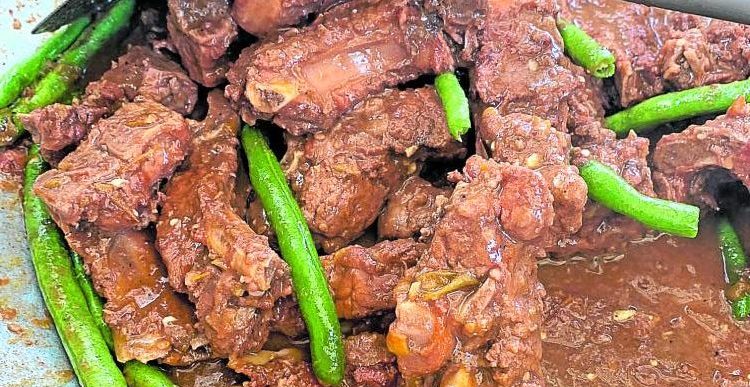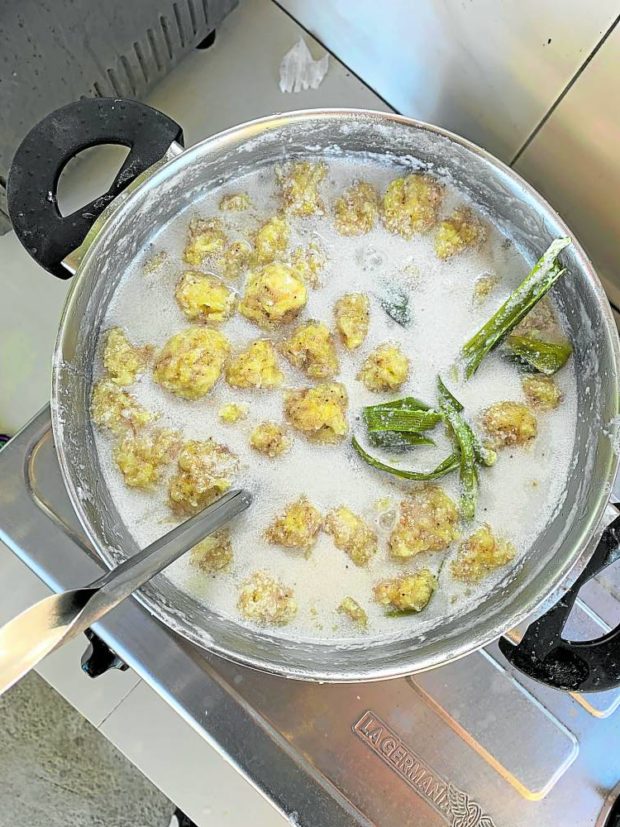
The food in Quezon doesn’t start and stop with Lucban longganisa and pancit habhab, which have become synonymous with the province’s cuisine. But there’s gastronomic wealth to be discovered, as I witnessed one Saturday when Tiaong-born-and-raised Melvin de Castro Tanyang welcomed me to his farm resort and cooked some of the dishes his family has been enjoying over the years.
Melvin was once a reluctant cook. His natural flair for cooking became apparent not just at home but also at Candelaria Elementary School, when his Home Economics teacher requested him to cook eggs time and again because he was the only one who consistently produced the perfect ones, with the yolk runny but not raw, and the sunny side always with a crispy brown skirt.
Yet, even if he showed signs of promise as a chef, he still ended up pursuing a career in the water trade industry.
Taguig ‘carinderia’
In 2009, his mom, who ran a canteen stall in Taguig, asked Melvin if he wanted to take over. Initially, he didn’t want to deal with all the stress that came with running a food stand. But his mom somehow managed to convince him to at least give it a try.
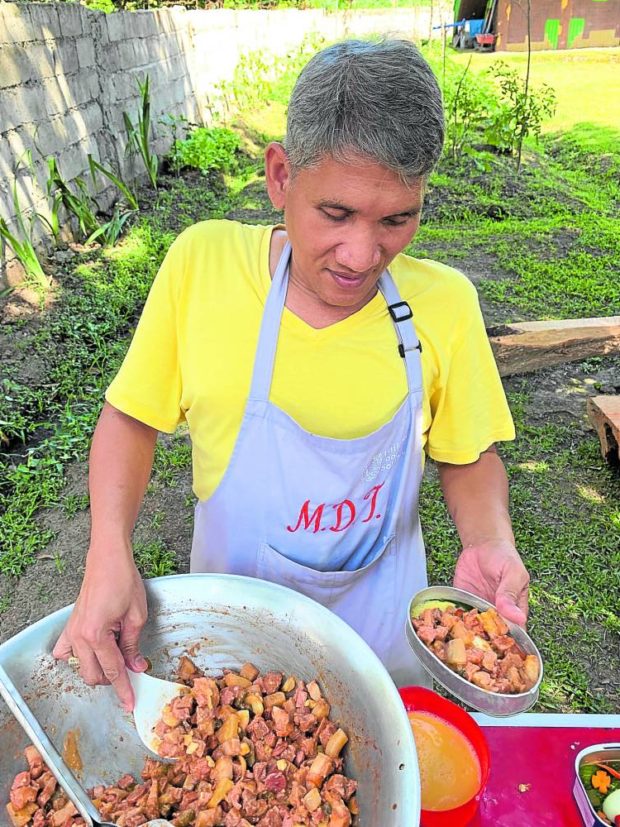
That’s how Melvin Carinderia was born and amassed quite a following at his spot on Balatong Street, Western Bicutan. There are three things people make a beeline for in his humble joint—his undeniable skills, seasoned palate and Quezon’s regional fare.
Among the dishes he serves is the sinantomas, cheekily named so because it has the sintomas (in English, symptoms) or makings of a traditional kaldereta. He melts a good amount of margarine in a pan and proceeds to saute pounded garlic and chopped onion. Pork ribs are added, along with the soy sauce-ketchup marinade they sat in overnight.
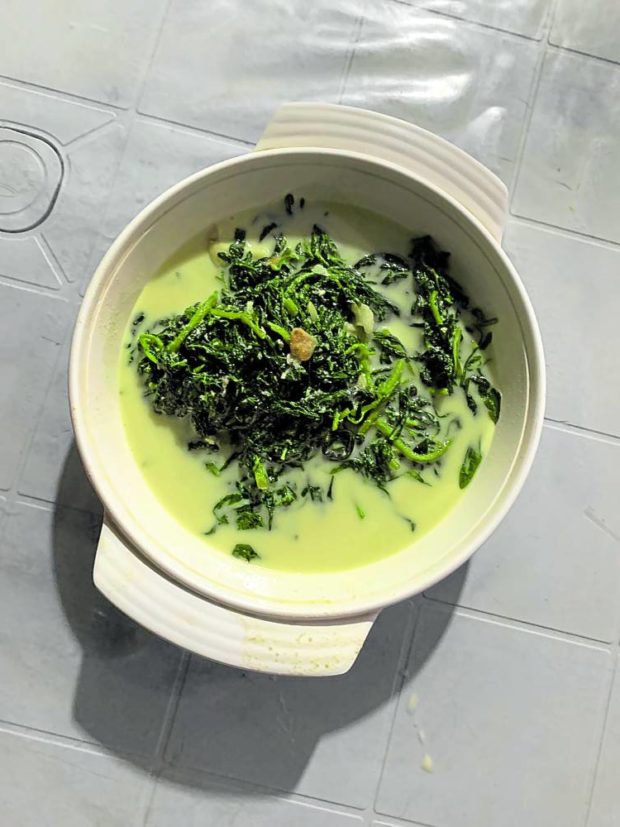
When the meat has “swollen,” as Melvin describes, a generous mound of chopped fresh tomatoes is thrown in, not tomato sauce as many kaldereta recipes normally require. To finish, he tosses in green beans and half a small can of liver spread.
Delicious, laborious
Something he showed me but rarely offers in his carinderia is his delicious hardinera, which can be quite laborious to make. He first slow-boiled chunks of kasim in a vat of vinegar, water, tomato paste, salt and pepper until tender, then left the meat in the broth overnight for the flavors to continue seeping in.
The next day, he cut the pork into bite-size pieces, and did the same with the pickles, pineapple, ham, chorizo Macao and cheese. Margarine was melted in a pan over medium heat then flavored with onion and garlic. All the chopped ingredients were added along with tomato sauce and banana ketchup. Once he was satisfied with the sweet and sour taste, the mixture was left to chill.
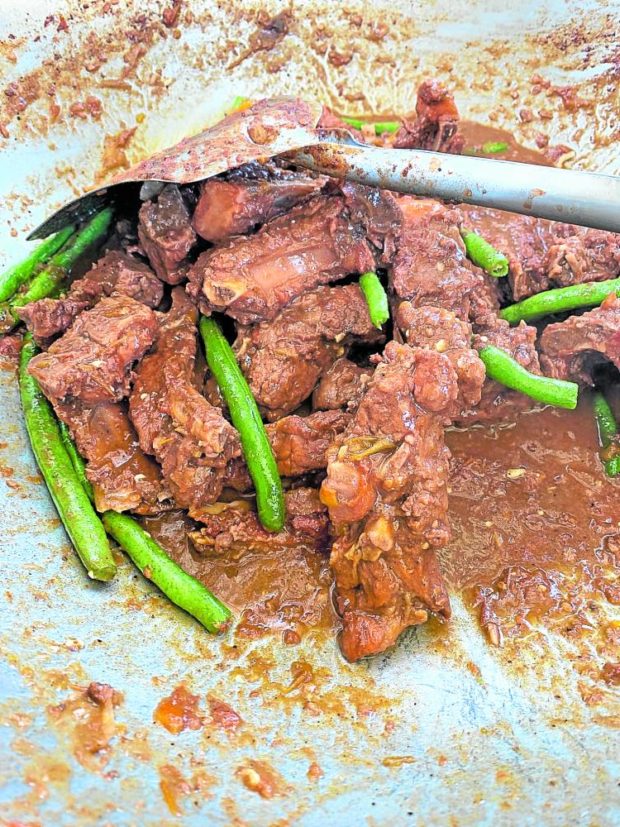
Meanwhile, he lined llaneras (the same ones used for leche flan) with banana leaves that had been brushed with margarine, then decked the bottom with half a boiled egg, carrots in the shape of a flower, red bell pepper slivers, raisins and pickles. He poured about a third of beaten egg in the tin, followed by the pork mixture that he pressed down.
The whole thing was covered with foil then steamed for 40 minutes. The result was a juicy meat loaf with the components and flavor of menudo.
‘Adobong’ Pasko
Another dish that definitely piqued my curiosity because of its back story was the adobong Pasko. It’s akin to adobo sa puti, where pork and chicken are cooked in vinegar without soy sauce. The fat is then rendered, producing a layer of fatty film on top so that it could last for days without requiring proper refrigeration. Typically, it is cooked on Christmas Day and eaten over the next few days leading to the New Year.
For merienda, Melvin made turon. Tucked inside the lumpia wrapper was sliced kalamay. It’s simply fried until crisp and golden, and enjoyed with its gooey, sticky, sugary center. This banana spring roll kind of turon is called sagimis in Quezon.
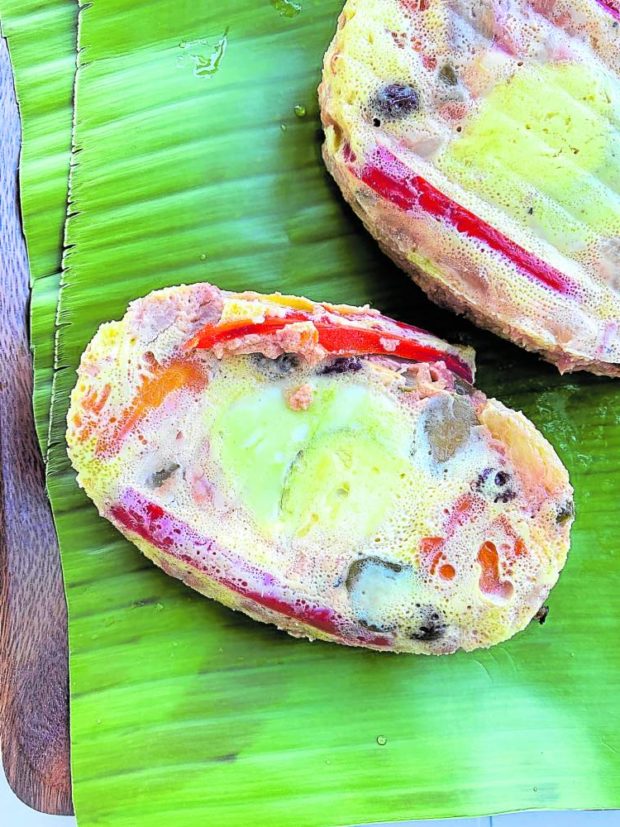
Similar to ginataang bilo- bilo is their pinaltok, oftentimes referred to also as pinindot. Unripe saba bananas were peeled, grated and rolled into small balls, with only their natural starch holding their shape and body. They were then poached in a simmering pot of freshly squeezed coconut milk, sugar and pandan leaves. Once they rose to the top, they were ready and served immediately.
Ginataang water lily, tortang picadillo, suam na mais at patola —these delicious dishes were also served along with countless stories about life in Quezon.
Before heading back to Manila, Melvin said he had another set of items he couldn’t wait to teach and let us taste. I’m already looking forward to that day. INQ
Special thanks to Don Baldosano.
Follow the author at @fooddudeph on Instagram.

